One of my favourite summertime recipes is Basil Pesto Pasta. There’s nothing better than harvesting your own basil and turning it into a delicious pesto. You can do so much with basil pesto, but my favourite is Basil Pesto Pasta. Here’s a guide on how to turn your excess basil crops into pesto and then use the basil pesto to make a simple, super-quick, yet delicious pasta meal.
Basil Pesto
Harvesting your Basil crop
To make the basil pesto you’ll need some basil. We usually have a decent crop of it growing specifically for making pesto. This year we’ve got a rectangular planter 50 cm x 70 cm dedicated just to growing basil. Like most herbs, basil benefits from a regular haircut. This haircut promotes fresh new growth and helps to slow the onset of the plants going to seed. At the moment we are harvesting our basil every fortnight and turning it into pesto. Any excess pesto gets frozen for use over the winter, when basil doesn’t grow so well.
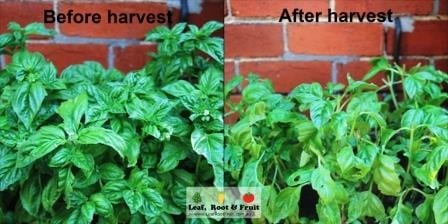
When harvesting basil, pick the young, newer leaves. It’s important to keep a few of the older, large leaves on each plant to help it quickly recover.
When harvesting your basil (and many similar herbs), you want to pick the younger shoots and leaves. By picking out the younger shoots, you are encouraging more lateral growth, which in the long term, means far more leaves to harvest. Make sure each plant has a few of its older, larger leaves remaining. These are the powerhouses of the plant and will be what helps it to bounce back so quickly from each harvest. After harvesting the leaves, give the plants a liquid feed with Seasol, or something similar to help promote a large flush of new growth.
Preparing your Basil leaves for use
Take your harvested leaves to the sink and wash them thoroughly. Strip the leaves off the stems and put the stems into the compost. Dry the leaves in a salad spinner. For households like ours without such a fancy kitchen gadget, lay a clean tea-towel on the bench, dump the leaves in the centre, gather up all four corners of the tea-towel, take it outside and spin it around your head a few times. Voila, a DIY salad spinner!
Basil Pesto Ingredients
I use the following ingredients, roughly in these quantities. Adjust them according to your taste.
- 1 bowl of Basil leaves (which blends down to about half a cup)
- Half a cup of Pine Nuts
- Half a cup of Olive Oil
- Half a cup of Grated Parmesan Cheese
Making the Basil Pesto
Use a food processor, or a mixing wand and a tall sided jug to blend the ingredients together. By increasing or decreasing the amount of Olive Oil that you add, you will alter the consistency of the pesto. So it’s a good idea to add the oil in stages until you get something you are happy with.
The pesto is now ready for use. You can store it in the fridge for a few days or freeze it in meal sized portions for use in winter.
You can use your basil pesto as a quick and easy pasta sauce, as a dip, as a spread on sandwiches or rolls and all sorts of other ways.

Basil Pesto is so easy to make. You can even freeze it for use in winter, when Basil doesn’t grow very well.
Basil Pesto Pasta
This basil pesto pasta is very quick to make. It also uses up some of those cherry tomatoes and spinach leaves that are usually in plentiful supply from our garden at this time of the year. All kinds of variations on this recipe are possible depending on what’s seasonally available. But, this is our favourite version.
Basil Pesto Pasta Ingredients
- 3 heaped table spoons of Basil Pesto (see above)
- One pack of Instant Spaghetti Pasta
- 2 Chicken breasts, skin off
- Half a cup of Un-salted Cashew nuts
- A handful or two of cherry tomatoes from the garden, sliced in half*
- A bowl of baby spinach leaves from the garden
- A few basil leaves for garnish
- Parmesan (or tasty) cheese to sprinkle on top.
*It’s important that the cherry tomatoes are sliced in half, as when cooked whole, they can explode when being eaten and burn the inside of your mouth.
Bringing it all together
Wash the baby spinach leaves and place them on the dinner plates as a bed for the pasta.
Heat up a little oil oil in a frying pan and place the chicken breasts in whole. Turn them occasionally until they are cooked through. By cooking them whole, you are ensuring that there are some delicious crispy bits on the outside, but the rest of the chicken stay moist and tender.
While you are waiting for the chicken to cook, place a large pot of water on the stove, add a pinch or two of salt and bring to the boil. Once boiling, add the spaghetti and cook until al dente. Drain the spaghetti.
Once the chicken is cooked, remove it from the pan and carefully slice it into 1cm chunks.
Return the chicken to the frying pan and add the cashew nuts, spaghetti (cooked and drained), tomatoes and pesto. Stir to mix it all together and give an even coating of pesto.
Serve the pasta on top of the bed of spinach and garnish with a few fresh basil leaves and a generous sprinkling of Parmesan or tasty cheese.
Bon apetite!

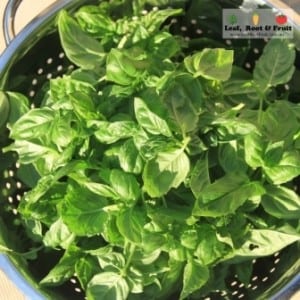
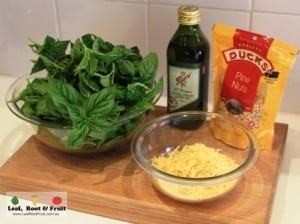
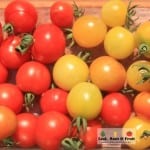
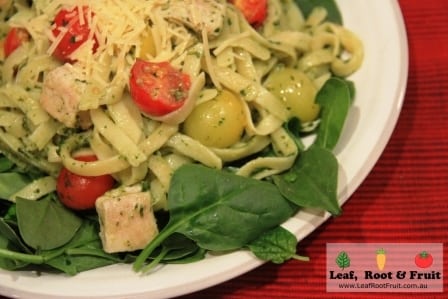

Thank you Duncan, yummy meal.
For vegetarians you can substitute cubes of tofu, or vegetarian sausages, or precooked beans, and for vegans sprinkle with vegan cheese. (Yes that’s is such a thing!) Any of these are just as delicious!
Thanks for the tip Helen!
I don’t usually like pasta, but this has got me drooling! Thanks for the inspiration, looks like Basil Pesto pasta will be on the menu this week! Though, this time I create the pesto I’ll be using an electric mashing device rather than the Pestle and Mortar I used last time!
I’m glad you enjoyed it. Yes, you’ll be there a while with a mortar and pestle.
Happy gardening